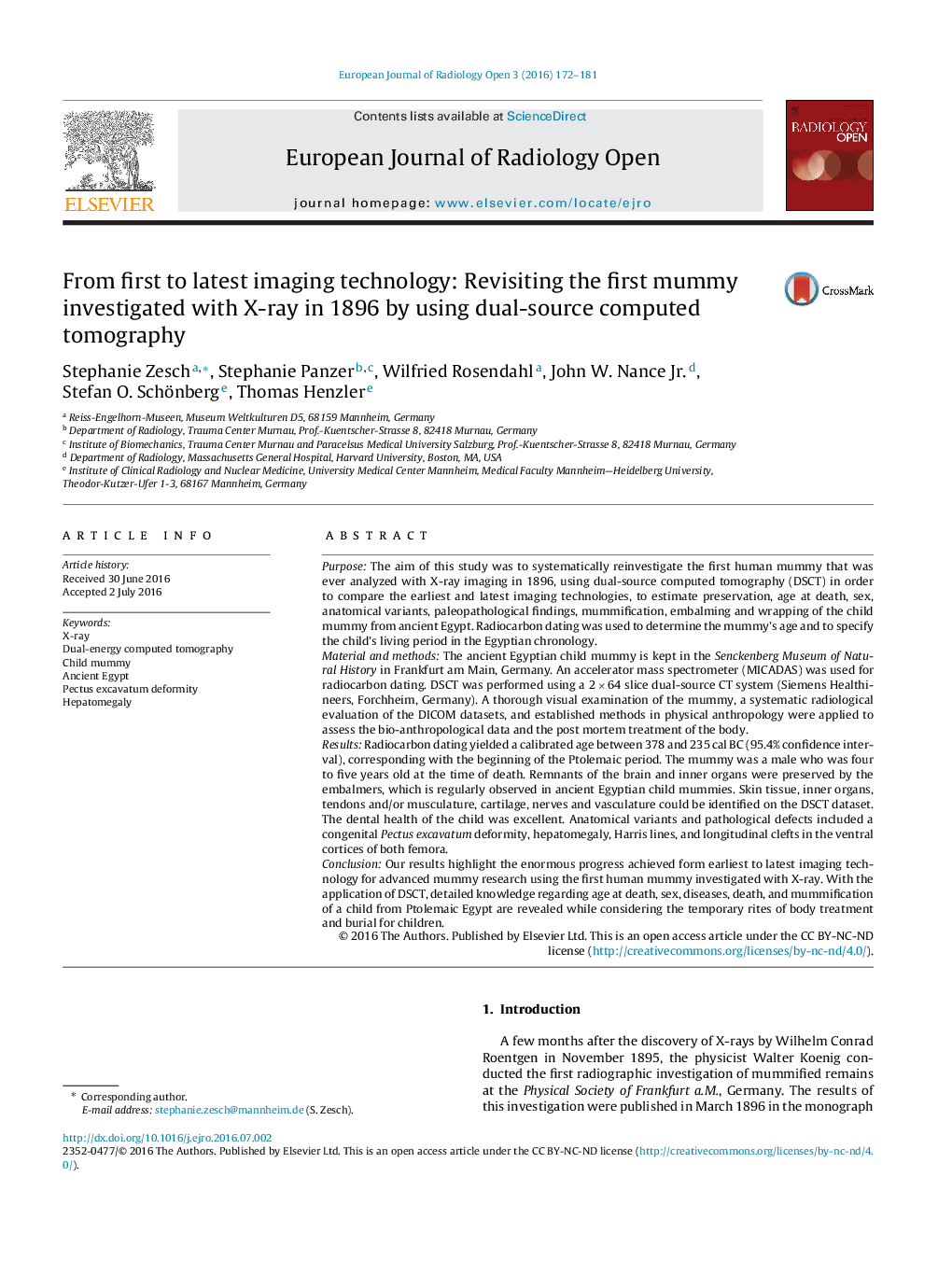| کد مقاله | کد نشریه | سال انتشار | مقاله انگلیسی | نسخه تمام متن |
|---|---|---|---|---|
| 4229670 | 1610061 | 2016 | 10 صفحه PDF | دانلود رایگان |
PurposeThe aim of this study was to systematically reinvestigate the first human mummy that was ever analyzed with X-ray imaging in 1896, using dual-source computed tomography (DSCT) in order to compare the earliest and latest imaging technologies, to estimate preservation, age at death, sex, anatomical variants, paleopathological findings, mummification, embalming and wrapping of the child mummy from ancient Egypt. Radiocarbon dating was used to determine the mummy’s age and to specify the child’s living period in the Egyptian chronology.Material and methodsThe ancient Egyptian child mummy is kept in the Senckenberg Museum of Natural History in Frankfurt am Main, Germany. An accelerator mass spectrometer (MICADAS) was used for radiocarbon dating. DSCT was performed using a 2 × 64 slice dual-source CT system (Siemens Healthineers, Forchheim, Germany). A thorough visual examination of the mummy, a systematic radiological evaluation of the DICOM datasets, and established methods in physical anthropology were applied to assess the bio-anthropological data and the post mortem treatment of the body.ResultsRadiocarbon dating yielded a calibrated age between 378 and 235 cal BC (95.4% confidence interval), corresponding with the beginning of the Ptolemaic period. The mummy was a male who was four to five years old at the time of death. Remnants of the brain and inner organs were preserved by the embalmers, which is regularly observed in ancient Egyptian child mummies. Skin tissue, inner organs, tendons and/or musculature, cartilage, nerves and vasculature could be identified on the DSCT dataset. The dental health of the child was excellent. Anatomical variants and pathological defects included a congenital Pectus excavatum deformity, hepatomegaly, Harris lines, and longitudinal clefts in the ventral cortices of both femora.ConclusionOur results highlight the enormous progress achieved form earliest to latest imaging technology for advanced mummy research using the first human mummy investigated with X-ray. With the application of DSCT, detailed knowledge regarding age at death, sex, diseases, death, and mummification of a child from Ptolemaic Egypt are revealed while considering the temporary rites of body treatment and burial for children.
Journal: European Journal of Radiology Open - Volume 3, 2016, Pages 172–181
